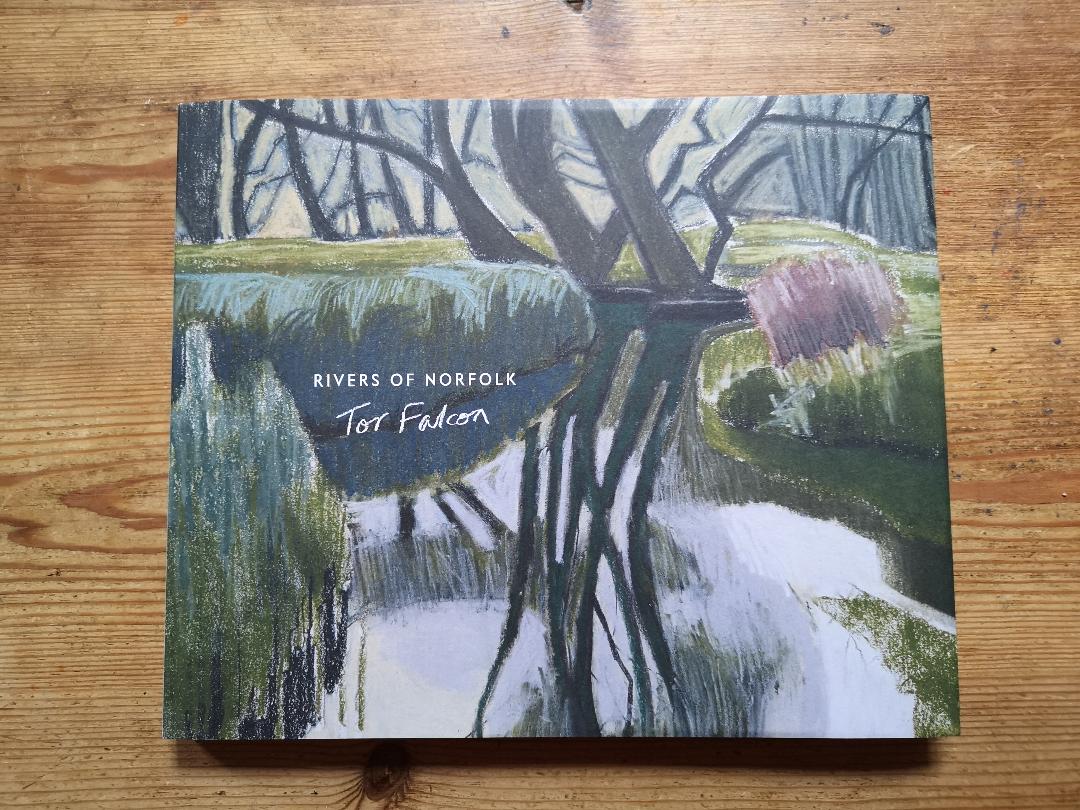Rivers of Norfolk
by
Tor Falcon
|
 |
As a child growing up in Norfolk, I was obsessed
with fishing. I fished the Bure, the Wensum, the Yare, the
Waveney, the Chet, the Ant and Hellington Beck. But, most of
all I fished the Tas - a small, secretive river that rises
at Carleton Rode and flows north for about twenty miles
towards Norwich. The Tas was my favourite place. I
knew every accessible part of the river from Tasburgh down
to Trowse and I was familiar with its changing faces through
the seasons. I knew its turbid winter flow; I knew its
limpid riffles in summer; I knew the mills where it cascaded
through; I knew the deep pools where the jack pike lurked
and I knew the best locations for long trotting for the
elusive Tas dace. In short, I loved it.
So when I
stumbled across Tor Falcon's book the Rivers of Norfolk
I was instantly hooked - knowing that I had come across a
fellow river lover. Her interest in Norfolk rivers began
when a friend of hers asked her to draw the Rivers Nar and
Stiffkey. This
inspired her to Google the term 'Norfolk Rivers' and she
came across an alphabetical list on Wikipedia of 38 rivers
which read, she says, like an Old English poem. She
subsequently spent four years drawing and recording all the
rivers on that list.Taking with here her chalk pastels and
drawing board she drove and walked her way round the various
rivers and becks. However, the resulting book is far more
that just a collection of pictures (albeit very good
pictures) - it is also a written record of her journey
downstream. Her prose is descriptive, evocative and
informative and includes relevant historical and
geographical information. For instance, on the River Bure
section she recalls the tragic incident at Great Yarmouth
in 1845 when a crowd - watching a clown named William
Cooke being pulled upstream in a barrel by two swans -
caused it to collapse killing 79 people. She also documents
the people who she meets on her travels: like the man who
stopped to tell her about the landlord of the Ferry Boat Inn
on the River Wensum in Norwich. She is also good on the
environmental challenges that face our rivers in this age of
climate change and water extraction.
The book
contains sections on the following rivers:
Ainse,
Ant, Babingley, Beeston Beck, Blackwater,
Bure, Burn, Chet, Cong,
Gadder, Gaywood, Glaven, Great Ouse, Gur Beck, Hagon Beck,
Heacham, Hor, Hun, Ingol,
Little Ouse,
Mermaid, Mun, Nar, Panford Beck, Penny Spot Beck, Scarrow
Beck, Spring Beck, Stiffkey, Tas,
Tat, Thet, Thurne,
Tiffey, Tud, Waveney,
Wensum,
Wissey and
Yare.
Tor is very modest about her writing and
expressed concern when I offered to do a review of her book
- saying that she didn't think it was 'literary'. Her
modesty is misplaced - as this delightfully poetic extract
from Penny Spot Beck reveals:
'Mostly you have to
pay attention if you want to hear the song of a Norfolk
river. It won't interrrrupt your thoughts. It's the
imperceptible something that accompanies the call of
dabchick, the slow tempo before a pike strike. A
breaststoking toad swims to its unhurried rhythm and the
refrain resonates with reed and mud.'
Hopefully this book will inspire us to look after the
county's beautiful rivers. If it doesn't then, at least,
it's still a faithful and delightful record of them.
An exhibition of Tor's river drawings can be seen at the
Castle Museum in Norwich until January 2020.
(9/10)
|
|

